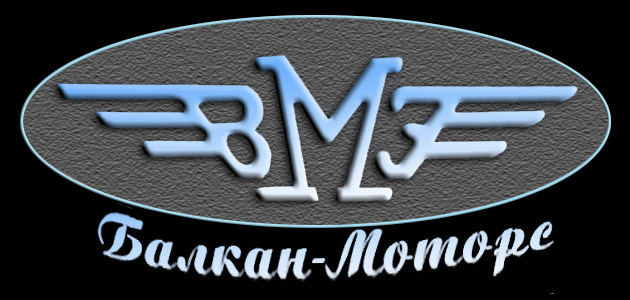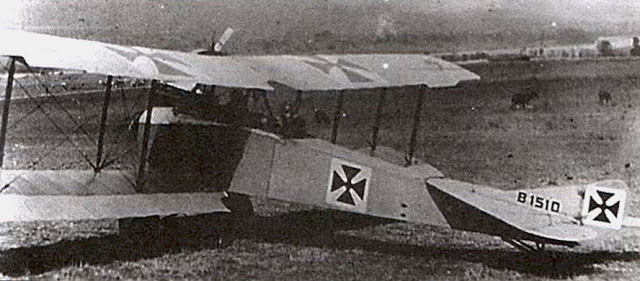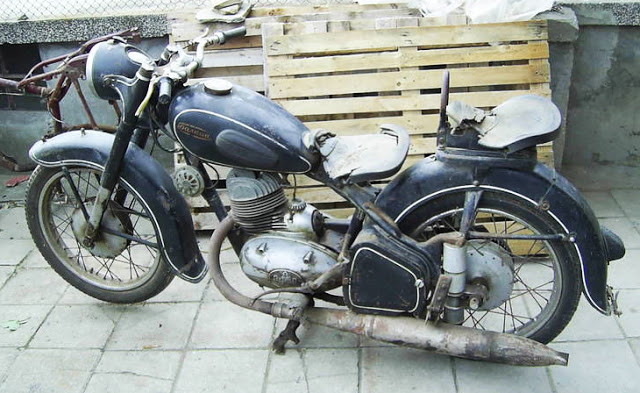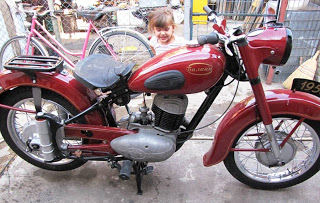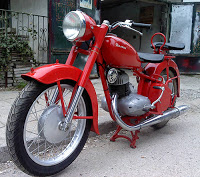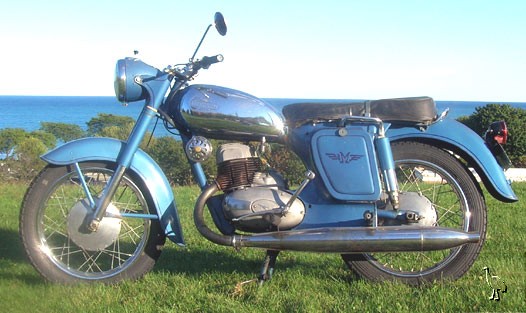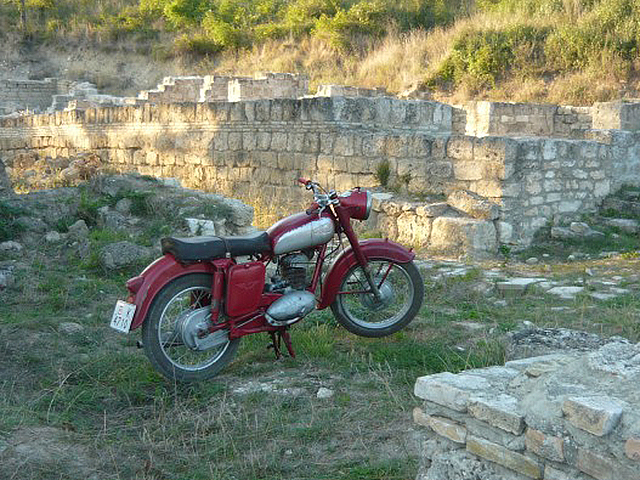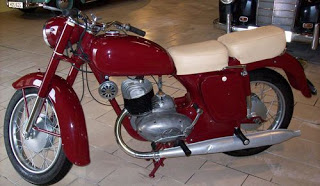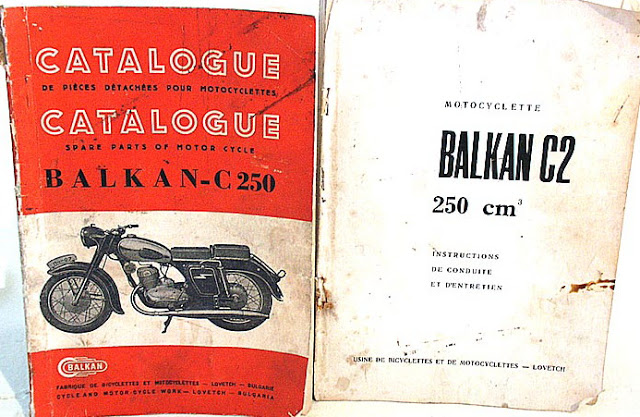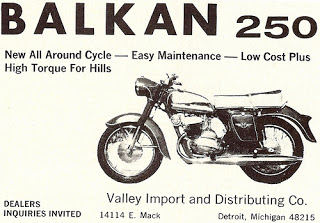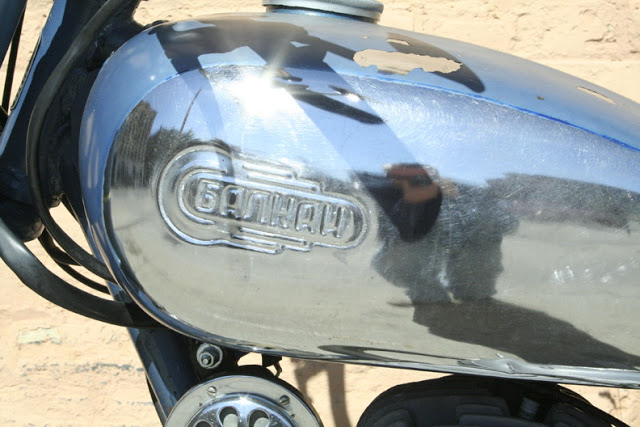Outside of Bulgaria very little is known about Balkan Motorcycles: a Google search will literally turn up more questions than answers. According to Brian Julien ( http://www.julienracing.com/files/Balkan_Information2.rtf ):
“It is my understanding that because of the totalitarian society, nearly every Balkan motorcycle ever produced was literally driven into the ground. The economic, socialistic environment was not conducive to people putting things away for prosperity. None were kept for archival purposes by the manufacturer or collectors and thus few remain…”
Fortunately this is not exactly true, although unless he’s actually visited Bulgaria Mr. Julien may certainly be excused for the assumption. Many are still on the road today and almost every Bulgarian “collector” has at least one in their stable: in fact several thousand of them were exported to various Soviet allied countries during the Cold War era.
At the end of World War I (1919) the Treaty of Neuilly-sur-Seine was signed with the intent of forcing reparations on The Kingdom of Bulgaria for its role as one of the Central Powers. Beyond ceding certain territories to the Serbs, Croats, Slovenes and to the Etente itself, Bulgaria was ordered to pay reparations of £100 million and to all but disband its military forces.
Bulgaria was also banned from operating military aircraft under any form for the next 20 years; all Bulgarian aircraft, aviation equipment, weaponry and ammunition were to be destroyed under Allied supervision and any aircraft procured for civilian purposes were to be purchased from the Allied countries. In 1920 the complete inventory of the Bulgarian airforce along with their remaining naval seaplanes were taken to the military airfield at Bozhurishte, near the capital of Sofia, and systematically scrapped.
 |
| Bozhurishte airfield, 1925 |
But a few Air Troops personnel -defiantly intent on maintaining some form of air force even if it was only symbolic- managed to secure assistance from nearby villages and salvaged seven DFW C.V’s, some Albatros C.III biplanes and a single Fokker D.VII along with at least 10 engines before the Allied inspectors arrived. Under the guise of an airmail service two planes were assembled from these parts and the Fokker was disguised as a two seat trainer.
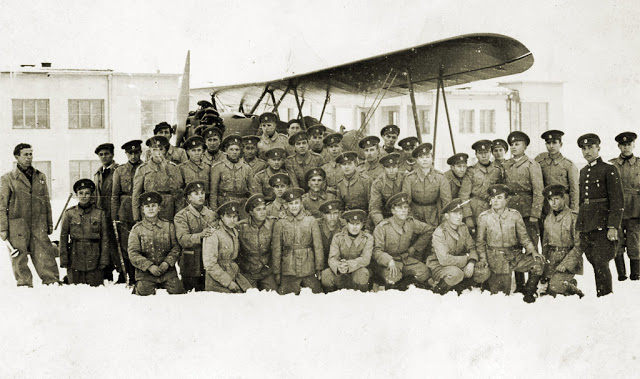 |
| Bulgaria State Aircraft Factory, Lovech 1942 |
Once the treaty’s 20 year limit expired in 1939 a hastily re-established Bulgarian airforce began building an aircraft production factory in Lovech, about 200km Northeast of the capital. The “State Aircraft Factory” or DSF (Държавна самолетна фабрика / ДСФ) engineering was headed by Captain Petko Popganchev, an accomplished pilot. Production of the DAR-9 (“Tits” ??) began in 1943 and the factory continued aircraft production (mostly Laz-7 trainers) under the name “Factory 14” until 1954 when the communist government ceased aircraft production in the country.
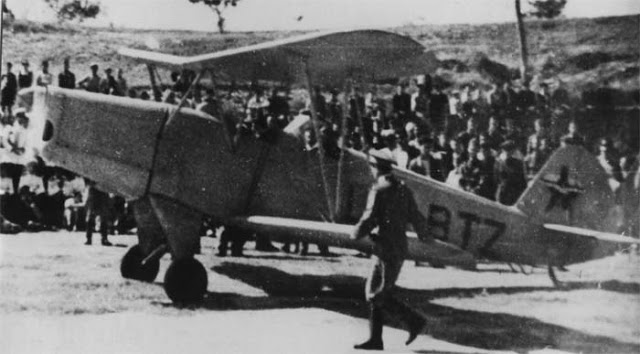 |
| Bulgarian DAR-9 |
For the next two years the factory struggled to maintain some production, mostly focused on agricultural machinery and even beehives. At this point it was being run by chief engineer Dimitar Damyanov; faced with a complete collapse of production and the subsequent loss of his design and engineering team, he proposed that the factory be converted to production of civilian cars and motorcycles. From 1944 until 1955 the import, trade and sales of cars and motorcycles for private customers was forbidden so the industry was basically non-existent in Bulgaria, and the Industrial Ministry agreed to support the plan. Engineers from “Factory 12” in Sofia began work on prototypes by copying the engines and mechanics from Volkswagon, DKW, Jawa and others. Meanwhile the Lovech factory began work on body and frame designs with a second team of engineers headed by Damyanov.
The first Bulgarian manufactured motorcycle prototype was almost completely based on the DKW RT 250 and was presented at the 17th International Sample Fair in Plovdiv in 1956: this was a 2 stroke 249cc single cylinder machine with 12.5 HP at 4800 rpm and a top speed of 110 km/h. In December 1957 the first 100 M-1 production machines rolled off the line at Factory 14, but the obvious technical and design similarities with the DKW led to an immediate copyright dispute, although it is unclear who the actual plaintiff was since DKW itself had lost their rights to the plans in the War Reparations Act. Nonetheless, within a few months three employees from Factory 14 were dispatched to the Jawa and CZ factories, returning with enough design changes copied from those bikes (which, incidentally, were also DKW copies) to satisfy the dispute and the M-2 went into full production.
In 1958 the C-2 “Sport” was released with a new rear suspension and new headlight design, and this model continued production until 1971.
About 1960 the factory released the MK50, a 50cc single cylinder with 3.30 HP/ 6500 rpm. Although commonly referred to as a “moped” it was in fact a motorcycle with no bicycle pedals. Shortly thereafter a 75cc model of the same bike came out. In September 1960 Balkan exhibited their new models in Plovdiv and took three gold medals. The export market included various countries in Africa and Central America along with Nicaragua, Cuba and neighbors Greece and Turkey.
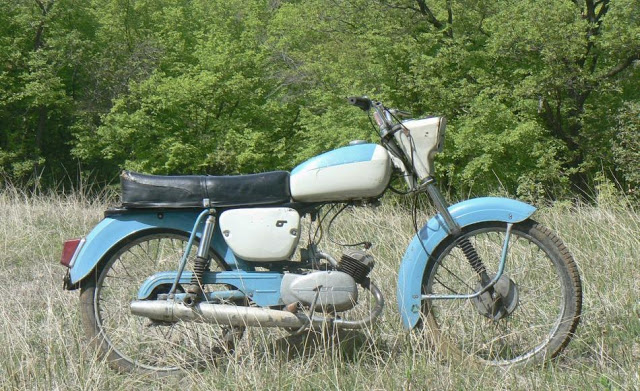 |
| Balkan MK50 |
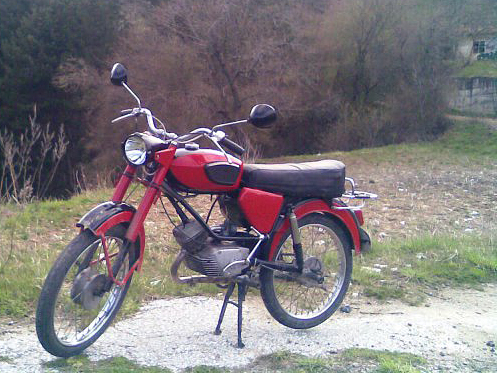 |
| Balkan MK75 |
 |
| Fiat “Pirin” |
The factory struggled with its automobile production; in 1962 plans to produce a commercial van copied from the Volkswagen Transporter were scuttled when Russia proved unable to deliver engines and frames, and production facilities at the Lovech plant itself were far too inadequate to manufacture the necessary parts. In 1966 a contract was made with Fiat for production of its 850 and 124 series, and about 758 cars were assembled under the “Pirin” brand before the contract expired in 1971.
About the same time (beginning in 1966) a new deal was made with Moscow to assemble Moskvich models 408, 412 and 2141 from complete parts kits shipped from Russia. Known as the Moskvich “Aleko” models, assembly continued in varying capacities up to 1988. In 1967 the factory officially changed its name from Factory 14 to “Balkan Motors”.
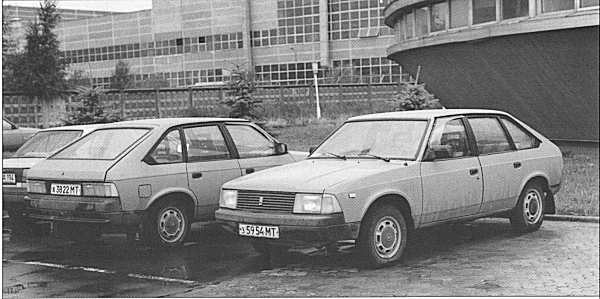 |
| Moskvich “Aleko” |
The last Balkan motorcycle was produced in 1975, ending a production run of 271,562 units including all models and modifications. But apparently a last ditch attempt was made for the export market sometime shortly before this: the bike made its way to the US when an unnamed American entrepreneur visiting Bulgaria discovered the brand. At the time he was operating a company called “Valley Imports” in Detroit, MI. and specializing in the import of used Volkswagen parts. Allegedly, a few samples were acquired and somehow evaded US customs but once he began taking out ads in magazines the government stepped in and called an immediate halt to the operation: the bikes were produced in a communist country and thus considered contraband in the USA. Although the existing stock was ordered to be destroyed some managed to survive and at least a few are currently in the hands of US collectors.
Today Balkan AD. is active primarily in the production of bicycles, electrical truck motors and forklifts.
References and Further Reading:
ДАР-9 Синигер
Мотопеди и мотоциклети Балкан
Balkan AD. Official Site

